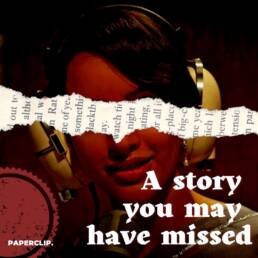Fact-checking is a crucial tool for safeguarding democracy, but few people know how WOMEN had led the way.
Time Magazine started hiring a group of women to verify information in the magazine when it was founded in 1923 to prevent blatant unchecked yellow journalism. They were no ordinary group of women, rather the first fact-checkers of the publishing industry.
Early in 1923, Nancy Ford was employed as the company’s first fact-checker. Ford provided and checked the facts for the writers of TIME magazine, setting the foundation for fact-checking procedures still in use today.
It’s worth noting that, at the time the male dominated industry viewed the job as women’s work, all of these early fact-checkers at the news organizations were female. The position created in 1923, was held solely by women up until 1971.
But this workplace discrimination was not an unusual occurrence. Programming or coding was regarded as a woman’s job only in the early 1940s due to its tedious nature. It wasn’t until rocket science emerged that programming began to be regarded as “man’s work.”
According to Times, Nancy and her female coworkers were initially entrusted with gathering newsworthy items from newspapers, but over time, Nancy’s responsibilities grew to include fact-checking and challenging the male writers for factual accuracy.
In contrast to today, when the Internet wasn’t really a thing, the New York Public Library emerged as the go-to resource for Nancy. Nancy spent hours in library and consulting references and spent extensive time and effort rewriting content before going to print.
Elizabeth Moran did extensive research on history of the first professional journalistic fact-checkers. She had demonstrated in one of her brilliant exhibitions the only three reference books available to Nancy – The Bible, Homer’s Iliad, and Xenophon’s Anabasis.
As one of the most physically and mentally taxing jobs, fact checking took a toll on Nancy, who eventually left the position once her initial days were over, after enduring severe stress.
Fact checking was typecasted for decades as being solely done by women, and media outlets drew in a lot of recent women college grads. They are the distinguished yet anonymous women who helped establish fact-checking as a standard practice, which is followed even today.
The Time magazine policy was revised in 1971 as a result of a complaint made by Newsweek’s female employees on the gender-discrimination of their employees. The position of fact-checkers was changed to “reporter-researchers” and eventually made available to men.
When no one wanted to take the arduous task of protecting journalistic values in a discriminated work environment, the women had shown us the path forward. A certain Nancy Ford and numerous anonymous young women surely deserve a cheer.
Sources: World of trade-offs: what journalists think of rating scales in fact-checking / YUE YU, University of Missouri-Columbia; Here’s How the First Fact-Checkers Were Able to Do Their Jobs Before the Internet / Merrill Fabry / The Times; How Media Mistakes Pollute the Press and Imperil Free Speech By Craig Silverman; The Publisher: Henry Luce and His American Century / Alan Brinkley. Against the Best Possible Sources by @elizabethcmoran, The LIFE Images Collection,




